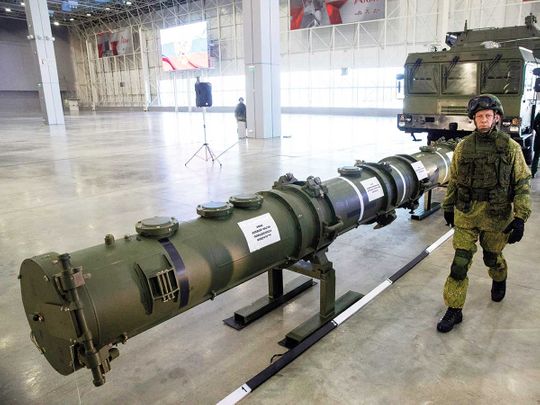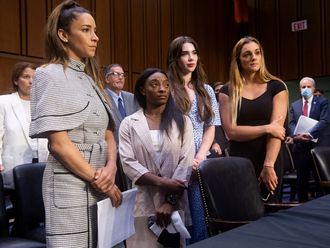
WASHINGTON: The United States on Friday terminated a major treaty of the Cold War, the Intermediate Nuclear Forces agreement, and it is already planning to start testing a new class of missiles later this summer.
But the new missiles are unlikely to be deployed to counter the treaty’s other nuclear power, Russia, which the United States has said for years was in violation of the accord. Instead, the first deployments are likely to be intended to counter China, which has amassed an imposing missile arsenal and is now seen as a much more formidable long-term strategic rival than Russia.
The moves by Washington have elicited concern that the United States may be on the precipice of a new arms race, especially because the one major remaining arms control treaty with Russia, a far larger one called New START, appears on life support, unlikely to be renewed when it expires in less than two years.
At a moment when the potential for nuclear confrontations with North Korea and Iran is rising, the US decision to abandon the 32-year-old treaty has prompted new worries in Europe and Asia, and warnings that echo an era that once seemed banished to the history books. The resurgence of nuclear geopolitics was evident in the Democratic debate on Tuesday night, when presidential hopefuls grappled with whether the United States should renounce “first use” of nuclear weapons in any future conflict.
Today hundreds of missiles in southeast China are within range of Taiwan, the self-governing democratic island supported by the United States. Missiles at other sites can hit Japan and India, and there are Chinese missiles that can strike the US territory of Guam and other potential targets in what American strategists call the second-island chain.
“Unilateral constraint was a losing proposition: China developed the world’s foremost force of missiles precisely within the ranges that INF would prohibit,” said Andrew Erickson, a professor of strategy at the US Naval War College. “So this increasingly antiquated treaty had no future.”
Until now, the Trump administration has held off on testing new missiles that would violate the treaty; under its terms, even testing is prohibited. But that stricture lifts on Friday, and the first test of new American intermediate-range missiles is likely to begin within weeks, according to US officials familiar with the Pentagon’s plans.
But the question is where to deploy them. “I don’t think the Europeans want to host them,” Gary Samore, the director of the Crown Center for Middle East Studies at Brandeis University and the chief nuclear strategist at the National Security Council under Obama, said on Thursday. In Asia, he noted, the two countries where it would make most sense to deploy the missiles would be Japan and South Korea, though any move to put the missiles there could infuriate China.
“The real question is where and whether or not there would be pushback,” said Bonnie S. Glaser, a senior adviser for Asia at the Center for Strategic and International Studies. “The most obvious place is someplace in Japan.”
Samore noted that the fate of New START, which governs the strategic weapons the United States and Russia have deployed, “is much more important than INF.” Senior military officials agree, but have added that once the INF treaty dies, it is hard to imagine a negotiation to renew New START, which expires in February 2021, right after the next presidential inauguration.
Even if it is renewed, Samore noted that in coming years, the source of strategic instability may not come just from nuclear weapons but also “from space weapons, artificial intelligence and cyber - and there we have no restraints.”












